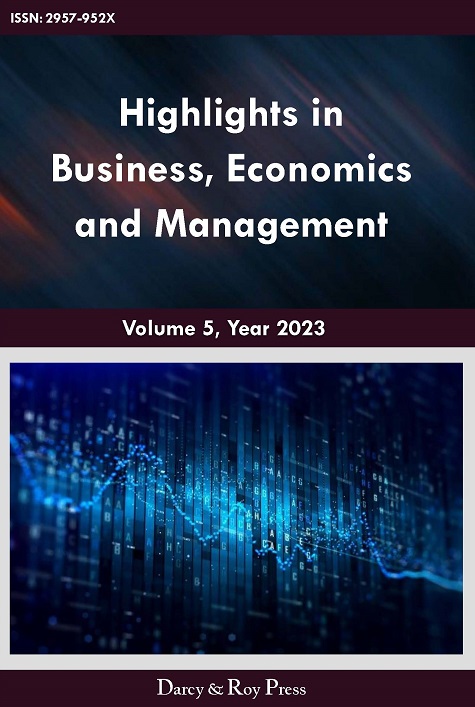An Empirical Study on How Financial Development Influences Carbon Emissions in Yangtze River Delta
DOI:
https://doi.org/10.54097/hbem.v5i.5154Keywords:
Financial development, Carbon emission, Regional Integration of the Yangtze River Delta, EIA model.Abstract
Financial development influences economic development to some extent. China is in the important stage of economic restructuring and upgradation, while facing both the foreign and the domestic pressure of developing low-carbon economy and promoting energy conservation and emissions reduction, requiring people to understand the relationship between financial development and carbon emissions. This paper examines how financial development influences the carbon emissions using the panel data composed by 37 prefecture-level cities in Yangtze River delta during the 2008-2017 period. This paper build the multiple regression model based on modified environmental impact assessment model (EIA) and measure financial development level using the percentage of loan balance of financial institutions in GDP and the percentage of saving balance of urban residents in GDP. The result shows a negative association between financial development and carbon emissions among 37 cities in Yangtze River Delta. Therefore, the policymakers should try to maximize the supporting of financial institutions to local economies, develop green finance and promote the regional information sharing and cooperation.
Downloads
References
Gu, Hongmei, He, Bin. A study on financial development and carbon emissions in China's provinces [J]. China Population - Resources and Environment, 2012, 22(8): 22-27.
Liu Xiaoyan. Analysis of factors influencing carbon emissions from industrial energy consumption based on STIRPAT model [J]. Ecological economy, 2019, 35(03): 27-31.
He Wujie, Chen Hanhua, Wang Zhuo. An empirical study on the relationship between green financial development and carbon emission dynamics--a test based on VAR model [J]. Journal of Guizhou Normal University (Social Science Edition), 2019(01): 99-108.
Shao, Shuai, Zhang, Ke, Dou, Jianmin. Energy saving and emission reduction effects of economic agglomeration: Theory and Chinese experience [J]. Management World, 2019, 35(01): 36-60+226.
Liu, Chenyue, Xu, Yingzhi. Marketization, structural overcapacity and environmental pollution - a test based on systematic GMM and threshold effects [J]. Statistical Research, 2019, 36(01): 51-64.
AHMAD W, KHAN S, Yunis M S. The Relationship of Macroeconomic Factors with Carbon Dioxide Emissions in Japan [J]. FWU Journal of Social Sciences, 2019, 13(2), 14–24.
MAJI I K, HABIBULLAH M S, SAARY M Y. Financial Development and Sectoral CO2 Emissions in Malaysia [J]. Environmental Science and Pollution Research International, 2017, 24(8), 7160–7176.
XU Z, BALOCH M A, DANISH, et al. Nexus between Financial Development and CO2 Emissions in Saudi Arabia: Analyzing the Role of Globalization [J]. Environmental Science and Pollution Research International, 2018, 25(28), 28378–28390.
SOUKIAZIS E, PROENCA S, CERQUEIRA P A, et al. The Interconnections between Renewable Energy, Economic Development and Environmental Pollution: A Simultaneous Equation System Approach [J]. Energy Journal, 2019, 40(4), 1–23.
BARRA C and ROBERTO Z. Investigating the Non-Linearity between National Income and Environmental Pollution: International Evidence of Kuznets Curve [J]. Environmental Economics & Policy Studies, 2018, 20(1), 179–210.
Downloads
Published
Issue
Section
License

This work is licensed under a Creative Commons Attribution-NonCommercial 4.0 International License.

















